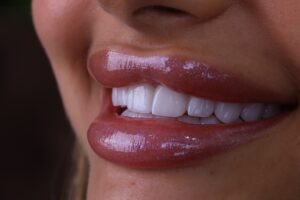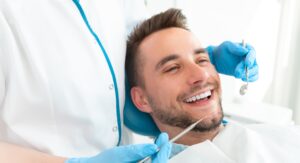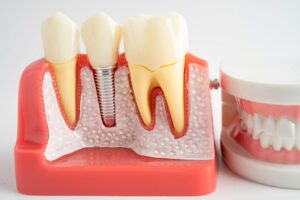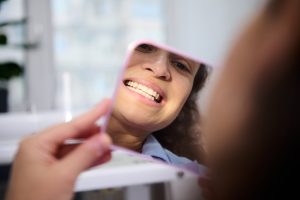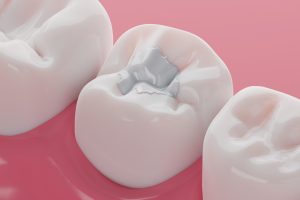An emergency happens to everyone, at any time, and in any place. Of course, no one likes accidents to happen. However, it is inevitable. No matter how one gives the effort to avoid it, mishaps are there. It has become a part of life. The good news is, people can always look for ways on how to deal with difficult situations. When it comes to dental emergencies, being knowledgeable enough on the “how-to’s” of handling them could save one’s dental health.
We at Thousand Oaks Dental understands that dental emergencies are unpredictable, that is why we leave an open schedule to provide Emergency services to our patients. We examine, offer a digital x-ray, and even offer free consultations to resolve the patient’s dental emergency issues. We specialize in handling tooth pain, loose and broken tooth, and even repairing a broken dental appliance, where usually are the most common to experience. We guarantee a safe and immediate solution to our patient’s dental emergency needs!

Here are the most common types of dental emergency issues and its corresponding treatment that one can do at home:
Toothache. A toothache is characterized by a sharp or dull pain in or around the tooth. A sharp tooth pain appears short and quick. For instance, it only triggers when eating or speaking and would eventually soothe after. Factors such as tooth and gum decay, infections in the gum, bruxism, or tooth sensitivity create a sharp pain in the tooth. A dull throb of the tooth often means that there is damage to the nerves. One will experience a dull ache slowly but can last for a long time. Unfortunately, it can be a sign of a more serious problem. Sometimes, toothache can also be a result of an injury.
To relieve tooth pain, create a mouth rinse by mixing a teaspoon of salt to a glass of water. Rinse the mouth after a meal or when waking up and before sleeping. Saltwater rinse is good in sanitizing the mouth. When the mouth is clean, there is a lesser risk of accumulating infections. The antiseptic properties in the salt water rinse can help prevent bacteria from growing.
Chipped Tooth. Someone with a cracked tooth might not feel any tooth pain unless the chip is large enough that it exposes the inner nerves of the tooth but if it does expose the nerves in the inner layer of the tooth, a sensitivity to hot or cold food and a pain while chewing is experienced. Biting hard substances such as ice cubes and candies, car accidents, doing extreme activities or sports without mouthguards, and bruxism is some of the most common causes of a chipped tooth.
There is no way that one can repair a chipped tooth at home. However, until one will reach the dentist’s office, to somehow reduce swelling and relieve the pain, rinse the mouth with warm water. If there is any bleeding area, apply pressure by putting a gauze or a tea bag. Put an ice pack on the side of the cheeks or lips over the broken tooth.
Loose Tooth. For adults, a loose tooth is not anymore a normal occurrence. It could be the result of an injury, teeth grinding, gum disease, pregnancy, and even osteoporosis.
When dealing with a loose tooth, it might be tempting to pull or pick the tooth; however, one should stop attempting to remove it by themselves. Doing so will increase the infection and bleeding. As much as possible, cease from biting hard foods. Keep it clean by gentle brushing, flossing, and mouth rinsing.
Broken Appliance. Some of the dental appliances such as dentures tend to wear out or break either by accidents or injury.
If a dental appliance break such as dentures, remove the loose and its broken part. Make sure to find the pieces of the broken appliance and bring it to the dentist.
Abscess. An abscessed tooth is an infection that spreads to the root tip or around the root of the tooth. The abscess is a collection of pus that is made up of a mixture of white blood cells, bacteria, and tissue debris. People with an abscessed tooth most likely to experience a throbbing toothache, tooth sensitivity, swollen gums, and fever.
To deal with abscess, maintaining proper hygiene is vital. To remove the plaque, floss the area in between the teeth. This will reduce the pain and inflammations. Also, rinse the mouth with salt water to remove bacterias.
A Word From Thousand Oaks Dental
These remedies will permanently soothe the pain and give temporary aid, however, it will not provide an accurate permanent solution to the problem. Remember that the pain will not go away on its own. It is recommended to see the dentist right away.
If you’re suffering from any of these common dental emergencies, book your appointment immediately at Thousand Oaks Dental for your Dental Emergency needs in San Antonio. You can visit us at 2235 Thousand Oaks Dr. Suite 120 San Antonio, TX 78232.

